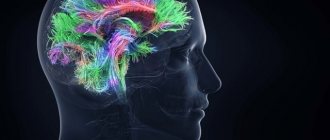This disorder is a chronic, relapsing mental illness that requires treatment. Bipolar disorder is one of the top ten most maladaptive diseases. This disorder is characterized by alternating depressive, manic and mixed episodes with periods of intermission - a completely healthy state in which patients do not feel signs of illness. It should be noted that there are no personality changes, even if phase changes occur frequently, and the person has been suffering from the disorder for quite a long time. However, it is known that patients' functional abilities deteriorate significantly as the number of episodes of bipolar disorder increases. Patients with bipolar disorder spend most of their lives in a painful state, the quality of life, social and family adaptation is significantly impaired, despite the fact that physically, as a rule, these are healthy people.
The prevalence of the disease is on average about 1% in the population, previously it was believed that cases of the disease are more common among women. Recently, manifestations of the classic disorder among men and women, as well as representatives of various cultural and ethnic groups, occur equally often.. Bipolar forms of the disease often develop in at a younger age, up to 25 years, and unipolar (with the manifestation of one type of mood disorder) - after 30 years. In later life, there is a tendency for the frequency of depressive phases to increase. Also, in more than 20% of cases, the manifestation of the disease is observed after 50 years.
In the case of the development of the bipolar variant, manifestation (i.e., the first signs of the disease) are noted at a young age, 59% of patients experience the first attack in childhood or adolescence (up to 20 years), but more than half of them do not receive therapy during subsequent 5 or more years. The correct diagnosis of bipolar disorder is established on average only 10 years after the onset of the disease. With this disorder, there is a high risk of suicide, especially common in adolescence.
What makes diagnosing bipolar disorder significantly more difficult is the presence of diseases in patients such as anxiety disorders or alcoholism, which can mask mood disorders. Quite often the disease is combined with the presence of somatic diseases - obesity, diabetes, diseases of the cardiovascular system, dysfunction of the thyroid gland. In this regard, insufficient motivation and decreased volitional efforts lead to increased morbidity and mortality in patients suffering from bipolar disorder.
Mostly, the idea of the causes of the disease is based on the genetic theory, which is revealed in the accumulation of the number of cases of the disease among first-degree relatives. However, the results of genetic, neuroendocrine, neurotransmitter, theoretical physiological and psychosocial theories suggest the presence of a complex etiology. At the moment, the influence of environmental factors, such as the pathology of pregnancy and childbirth or living in large cities, on the development of the disease has not been reliably proven.
There is evidence that in the development of phase formation in bipolar disorder, both psychogenic (socio-psychological reasons) and somatogenic factors (oncological diseases, head injuries, hormonal disorders; imbalance of basic hormones, intoxication of the body, including drug use; thyroid dysfunction). Despite the fact that in the case of bipolar course and manic episodes, external factors play a role only at the beginning of the development of the disease as provoking ones, and subsequently there is a tendency for the phases to spontaneously arise.
There has been an increase in the incidence of affective diseases associated with hormonal changes in women during menstruation, the postpartum period, and involution. Women who have experienced postpartum depression are more likely to develop bipolar disorder.
There are several personality traits that are associated with an increased risk of developing bipolar disorder. These are individuals of the melancholic type, people who are easily vulnerable, prone to deep emotional experiences, developed intuition and the need for empathy. Also, people who have a need for constancy and responsibility, conscientious, with a high level of personal anxiety, a sense of inferiority, suspiciousness, shyness, timidity (psychasthenic personality traits). Among the variants of the unipolar course (i.e. when there is only one variant of a mood disorder, for example depression), more often there are people who, before the development of the disease, have traits of isolation, a tendency to withdraw into their own fantasies, outwardly emotionally cold, preferring loneliness (having schizoid personality traits).
At risk are patients prone to emotional instability, with violent affective reactions to external causes, and a tendency to spontaneous mood swings. On the other hand, people who suffer from a lack of proper emotions, who are conservative, monotonous and rigid are predisposed to the disease.
Signs of a depressive phase
Bipolar disorder begins in most patients without noticeable bright manifestations.
In a typical case of MDP, there are subtle fluctuations in the background mood with cycles of several days or weeks. Researchers of the problem emphasize that the unfavorable course of bipolar disorder is the onset of the disorder from the first depressive episode. During the depressive phase, 89% of suicides or suicide attempts occur. Depression occurs when high productivity of mental processes is abruptly replaced by its decline. Specific manifestations of the phase:
- severely depressed mood;
- slowing down the thought process;
- slower speech motor activity;
- decreased or complete absence of appetite, perverted taste sensitivity;
- weight loss;
- prostration;
- in women - problems with menstruation;
- mothers have problems with maternal instinct;
- lack of sexual desires;
- melancholy, which is felt physically as heaviness in the chest area;
- attacks of tachycardia, constipation, mydriasis (dilated pupils of the eyes);
- self-flagellation, guilt;
- increased anxiety;
- cognitive impairment.
Depression sometimes takes on an endogenous form - due to the biological nature of the disorder, not only mental, but also somatic and endocrine disorders occur.
Sometimes an “atypical” course of depression develops—increased appetite, hypersomnia. There is also a hypochondriacal type of disorder - in this case, obsessive hypochondriacal beliefs with an affective overtone are noted. With the delusional type of progression, “Cotard's syndrome” is present - in addition to anxiety, delusional beliefs of a fantastic nature are observed. With agitation depression there is noticeable nervous overexcitation. With the asthenic variant, the patient experiences a loss of the ability to feel anything.
Patients experience unmotivated sadness and a feeling of hopelessness especially acutely - from several hours to several days without the ability to be distracted by anything else. The person withdraws into himself and stops contacting family members and friends. Interest in those activities and things that previously had interests is completely lost. Low ability to learn new things. Appetite may be uncontrollable or absent.
Fatigue and lack of energy are felt around the clock. Sleep is interrupted, and episodes of awakening occur frequently, especially in the early morning. After sleep, a person does not feel rested. Memory problems arise and concentration is poor. Thoughts about suicide appear - a person experiences a clear conviction that life has no meaning and will never bring pleasure. With parasuicidal behavior, a syndrome of “tunnel thinking” is observed.
The depressive phase is very dangerous due to the high level of suicidal tendencies, parasuicides, and auto-aggressive acts. It is recommended to hospitalize the person for subsequent treatment in a hospital setting. 24-hour monitoring of the patient’s condition and indicators is important.
What symptoms are used to diagnose bipolar disorder? How does the disease manifest itself?
Bipolar disorder is characterized by severe mood swings. The mood for several months, weeks or (less often) for several hours “goes to extremes” - it becomes too cheerful and too bad.
The mood for several months, weeks or (less often) for several hours “goes to extremes” - it becomes too cheerful and too bad.
Mania or hypomania is an elevated mood and violent physical and mental activity. Mental activity becomes heterogeneous - attention captures every detail, but it is difficult to concentrate on one thing for a long time. Thoughts are constantly “jumping”, one idea is quickly replaced by another. All emotions intensify: joy - to euphoria, irritation and resentment - to aggression, suspicion - to paranoia. Physical activity also increases: you almost don’t want to sleep (three hours of sleep seems enough), sexual desire increases. Behavior becomes impulsive, reckless, sometimes even adventurous and eccentric. A person can become obsessed with an idea. During a manic episode, delusions and hallucinations may occur.
Hypomania is liked by everyone who has experienced it at least once. With hypomania, unlike mania, delusions or hallucinations occur less frequently, criticality remains, and aggression is lower. However, hypomania is not a normal mental state; the brain works in an enhanced mode. Reserve resources are used to speed up mental processes, and when they run out, complete exhaustion occurs. With hypomania, the psyche seems to be running a sprint. Imagine if you only run all your life - your body will quickly deplete and wear out. It’s the same with the psyche. Hypomania can develop into more unpleasant states - mania or depression.
Reserve resources are used to speed up mental processes, and when they run out, complete exhaustion occurs. With hypomania, the psyche seems to be running a sprint.
Another sign of bipolar disorder will be not just a bad mood, but depression, from mild short-term to severe long-term. Here everything is the other way around. Activity drops: when you need to do something, there is neither strength nor desire. Mental activity is even more difficult: in addition to the lack of desire and strength, it is difficult to concentrate, remember, analyze, and make a decision. The experience of emotions becomes dull, with the exception of worsening resentment, guilt, hopelessness, confusion, anxiety or indifference. Appetite changes, insomnia or excessive sleepiness appears. Even if you are a very cheerful person, severe depression can cause suicidal thoughts. With severe depression, delusions and hallucinations may occur.
These phases can replace each other and can appear simultaneously. For a long time, only one pole can manifest itself - then even doctors, instead of correctly diagnosing “BAD,” may first diagnose “depression.” The breaks between episodes (intermissions) are different for everyone - it can be a month, a year, three years, five years.
In a healthy person, changes in the activity of mental processes are not so contrasting and are more amenable to regulation. They do not lead to a deterioration in everyday functioning - a person can successfully cope with the professional and academic responsibilities assigned to him, and establish and maintain relationships with others.
Diagnostics
Diagnosis is carried out by psychiatrists. This is an important step before treating the disorder, since the symptoms of many mental disorders are similar to each other. To exclude or confirm organic lesions, MRI of the head, radiography, and electroencephalography are prescribed. The diagnosis is made according to the criteria of the ICD disorder according to the categorical division of symptoms.
An episode of a mood disorder is considered to be a condition in which the mood disorder is expressed to a certain degree and for a certain time: depression - 2 weeks; mania – 1 week. According to researchers FK Goodwin, KR Jamison (in 1990), 65-70% of initially established psychiatric diagnoses are erroneous - other diseases are easily confused with bipolar disorder. The consequence is the prescription of incorrect drug treatment, aggravation of the course of MDP.
The diagnosis of manic stage is established if the person being examined has at least three of the following symptoms:
- delusions of grandeur;
- excessively low need for sleep;
- previously unusual incoherence of speech;
- uncontrolled flow of ideas;
- previously unusual distractibility;
- psychomotor stimulation;
- interest in activities with increased risk to life or health;
- problems in labor, educational, social functioning of the individual.
The psychiatrist determines the severity of the disorder: mild, moderate or severe with psychotic symptoms. According to research by authors RM Hirschfield et al., (2003), G. Perugi (2010), affective disorder is more often confused with depression (60%), anxiety disorder (26%), schizophrenia (18%), personality disorders (17%) , addiction to psychoactive substances (14%).
To establish the correct diagnosis, pay attention to the following points:
- with bipolar disorder, there is an unstable mental response to treatment with antidepressant drugs;
- in case of bipolar disorder, depression and anxiety are initially not combined with the use of psychoactive substances;
- psychotic symptoms develop at a previously normal level of social adaptation;
- family history is likely to include mood disorders or other mental pathologies.
The complexity of diagnosis is based on the fact that the symptom complex of bipolar disorder in its depressive phase is in many ways similar to clinical depression. Differences between bipolar depression and its other types: appetite disorder of the hyperphagia type, the presence of hypersomnia, mild psychotic manifestations. Bipolar disorder is also differentiated from classical depression by the fact that manifestations are noticeable in childhood and develop faster.
Reminder for the treatment of bipolar affective disorder (BD)
Control of biological factors:
- See a psychiatrist (at least once every three to four months);
- Take medications prescribed by a psychiatrist;
- Lead a healthy lifestyle;
- Set a daily routine.
Control of psychological factors:
- Accept yourself with bipolar mental disorder;
- Take a course of psychotherapy;
- Apply independently acquired skills to prevent and resolve stressful situations;
- If possible, minimize the number of stressful situations.
Control of social factors:
- Help and support of family members;
- Stable and feasible work;
- Communication, spending time with friends and acquaintances;
- Social activity, expanding the circle of acquaintances.
This memo clearly shows that you yourself can do a lot to improve your condition. Almost everything depends on you.
Remember: when protective factors outweigh risk factors, this is a good tool for reducing the frequency and intensity of episodes.
Causes of the disease
Accurate scientific data on the causes of TIR have not yet been established. But there are confirmed factors that increase the risk of developing the disease:
- genetic predisposition;
- autointoxication with psychoactive substances;
- disturbed endocrine water balance, water-electrolyte metabolism;
- organic disorders.
The following hormones are involved in the development of pathology: norepinephrine, serotonin, dopamine, acetylcholine, GABA. With bipolar disorder, there is an increased tone of the sympathetic nervous system, hyperfunction of the thyroid gland and pituitary gland.
At risk are persons with the following characteristics:
- melancholic temperament;
- excessive conscientiousness;
- traits of a psychasthenic personality type;
- increased anxiety and suspiciousness;
- instability of the emotional sphere.
The disorder occurs either for no apparent reason or after provoking factors (stress, past infections, psychological trauma, against the background of other mental pathologies).
The main role among the reasons is given to the genetic factor. It has been established that if a close relative has mental pathologies, the risk of developing bipolar disorder is 14-15%. M.R. Post and SR Weiss in 1989 described the causes of bipolar disorder, which were hidden in the effects of various stimulants and surfactants.
Anal personality
Pedantry is one of the core symptoms of a personality disorder called anal personality. It was named so by Sigmund Freud. The traits of such a personality are stubbornness, honesty, and obsessive maintenance of cleanliness. A person with this disorder is stubborn, characterized by rigidity in thinking and acting. Has a penchant for petty pedantry, excessive organization of everything, is economical, and has a poor mind. He is too suspicious of others, quickly gets irritated, reacts impulsively and may show an increased tendency to aggression. Unfortunately, he also has a tendency towards dictatorial behavior and likes to boss others around. Often a narcissistic and gloomy person. He is characterized by a passion for collecting objects and is good at individual jobs, including artistic professions. This type of person always brings things to the end. People of this type have excellent memory. If you remember something, then for the rest of your life. They have a lot of phone numbers and jokes stored in their heads.
Differences between males and females
If you believe the statistics, men get sick less often than women. Ratio: 3:2. The female part of the patients is characterized by a rapidly cyclical nature of the disorder. Women have low sensitivity to therapeutic methods. They have a higher risk of suicidal behavior and a higher rate of hospitalization. The symptoms of bipolar disorder in men are practically no different from the manifestations of the disorder in women.
Minor differences - in the male part of the patients the phases of mania and hypomania predominate, and in the female part - depressive states. Symptoms of depression in women are much more pronounced.
Pedantry and obsessive-compulsive disorder
Excessive pedantry can be a symptom of obsessive-compulsive disorder (OCD). This condition consists of two types of symptoms. The first is obsessions or obsessive thoughts that interfere with normal existence. They are caused by anxiety, a core feature of the disorder. The second symptom is compulsion, which is a compulsion that a person does to get rid of an obsession, such as worry, so he cleans the bathroom again because he thinks that if he doesn't something will happen to his child. it's bad when he goes there. Another example of pedantry combined with OCD: you need to go or go to work in the same way as it was done before, because if you choose a different path, an accident or other trouble will occur.
TIR in children
Bipolar affective disorder is most often diagnosed in people between 15 and 55 years of age. Symptoms are most pronounced at the age of 16-20 years.
Very rarely, bipolar disorder is observed in childhood. The difficulty of diagnosis at this age stage is that symptoms of a mood disorder are often confused with ADHD. Treatment for ADHD involves taking stimulants. And if the child really has bipolar disorder, then stimulants increase symptoms in the manic phase.
The course of the disease in children differs from the pathology of adults. Children during manic periods show more irritability than adult patients. The symptoms of mania are usually more severe, and hallucinations are sometimes present.
Childhood patients, experiencing a depressive phase, suffer from physical symptoms and pain. A noticeable difference in children's bipolar disorder is hidden in the frequency of alternating cycles. A child’s cycles change very quickly, sometimes even within a day.
Diagnosis is also difficult for adolescent children. The reason is that the symptoms are difficult to differentiate from depression or mood swings that are natural for this age. In case of childhood mental disorders, in addition to the classical treatment regimen, it is important to consult with parents to increase pedagogical awareness.
The following BAR options are available:
- unipolar (monopolar), in which only manic or depressive phases alternate (considered within the framework of recurrent depressive disorder).
- bipolar:
- Bipolar type I consists of alternating depressive and manic (mixed) episodes.
- Bipolar type II. Due to the weak severity of the manic phase, which manifests itself in the form of hypomania and the presence of a full-fledged depressive phase, it is more difficult to diagnose, but occurs much more often than the first.
Screening for bipolar disorder type II should be carried out in all young depressed patients and in all patients with recurrent depression. Patients with unrecognized type II bipolar disorder often receive monotherapy with antidepressants, which leads to the development of induced hypomania or mania, although they could benefit more from the prescription of mood stabilizers or their combination with antidepressants.
Flow options:
- alternating type of flow - characterized by a change in affective phases through a period of intermission;
- continuous (circular) type of flow (lat. psychosis circularis continua CC Korsakov) - with the “correct” alternation of phases there are no intermissions.
- Rapidly cyclical course - determined by the development of at least 4 affective phases during the year. Moreover, each depressive episode lasts at least two weeks, each manic or mixed episode - at least one week, each hypomanic episode - at least 4 days.
- Ultra-fast cycles - alternating periods of depression and mania within one day, when the condition is almost impossible to distinguish from mixed affect.
If the depressive and manic phases are mild in nature - their manifestations are dim, smoothed out, then such bipolar psychosis is called “cyclotomy”.
What is the difference between a pedant and a perfectionist?
At first glance, these two concepts seem identical. Actually the difference is quite big.
A perfectionist and a pedant differ from each other in their attitude towards the ideal: the first is convinced of its achievability and strives to achieve it at any cost, the second is quite satisfied with imperfection.
The pedant pays great attention to detail. And if, in his opinion, all the rules are followed, he is satisfied with the result. A perfectionist, in principle, is rarely satisfied with the products of his activities. It is characterized by extremes: either perfect or not at all. For example: “Either this is the best painting, or I won’t paint at all.”
More than 100 cool lessons, tests and exercises for brain development
Start developing
Here are some other differences:
- A perfectionist is afraid that the result will not be ideal. The pedant is afraid that he himself will turn out to be imperfect (or incorrect).
- A perfectionist often has difficulty meeting deadlines. He takes a long time to verify each compliance with his idea of the ideal, corrects it many times and forgets about deadlines. For a pedant, deadlines are sacred.
- For a perfectionist, creative disorder is acceptable. All his strength and attention are aimed at achieving results and progress. The pedant is very careful in detail and is demanding of order.









